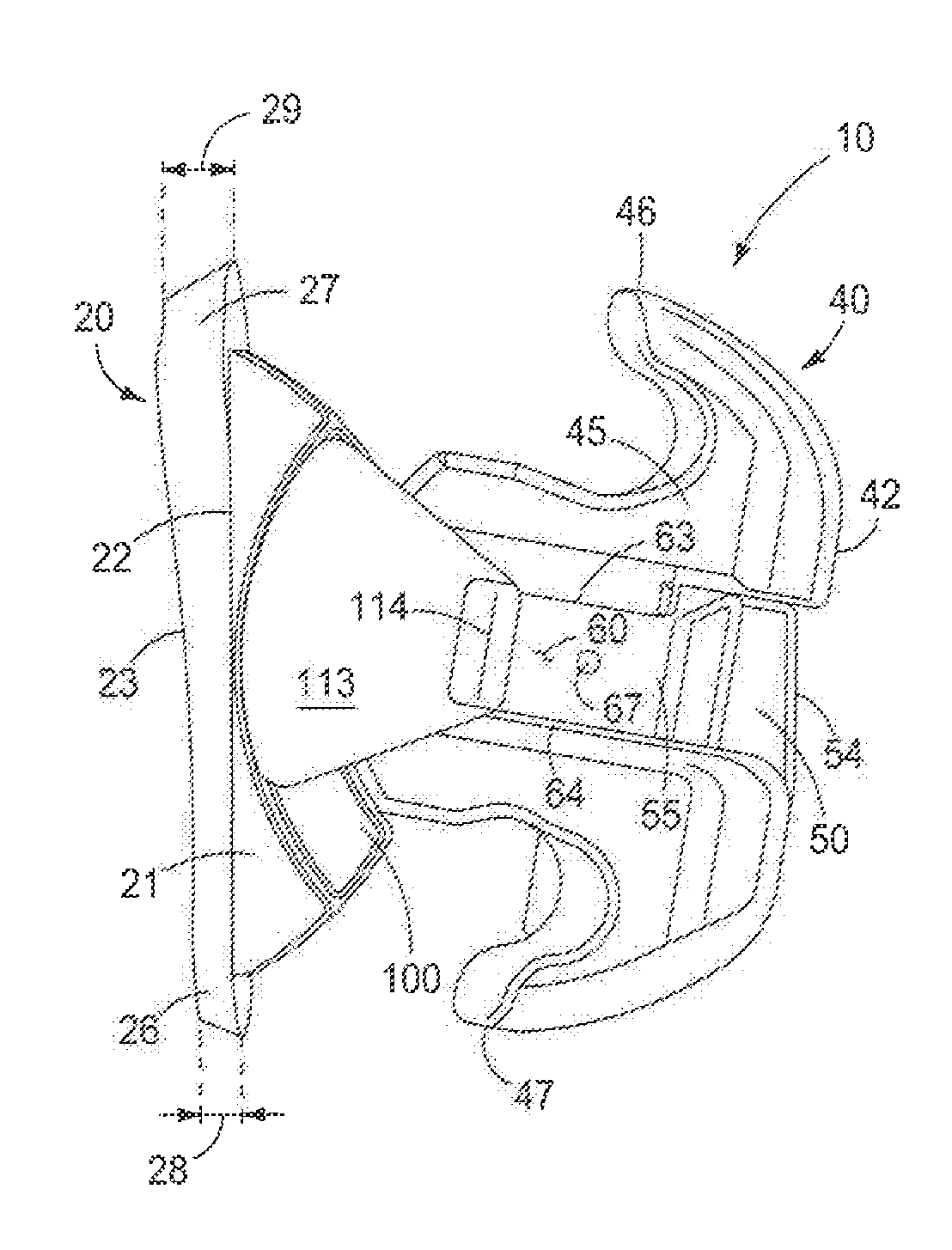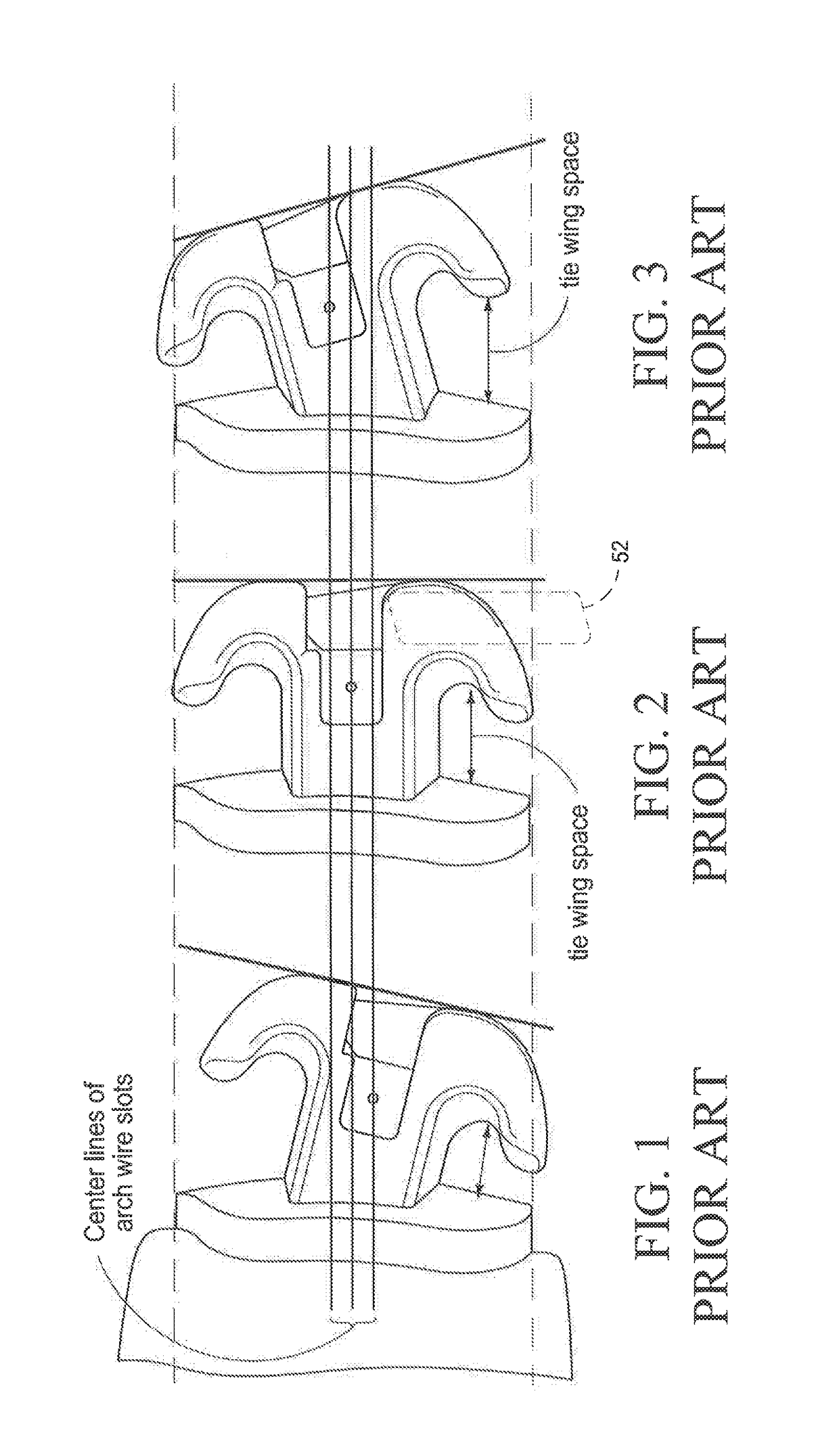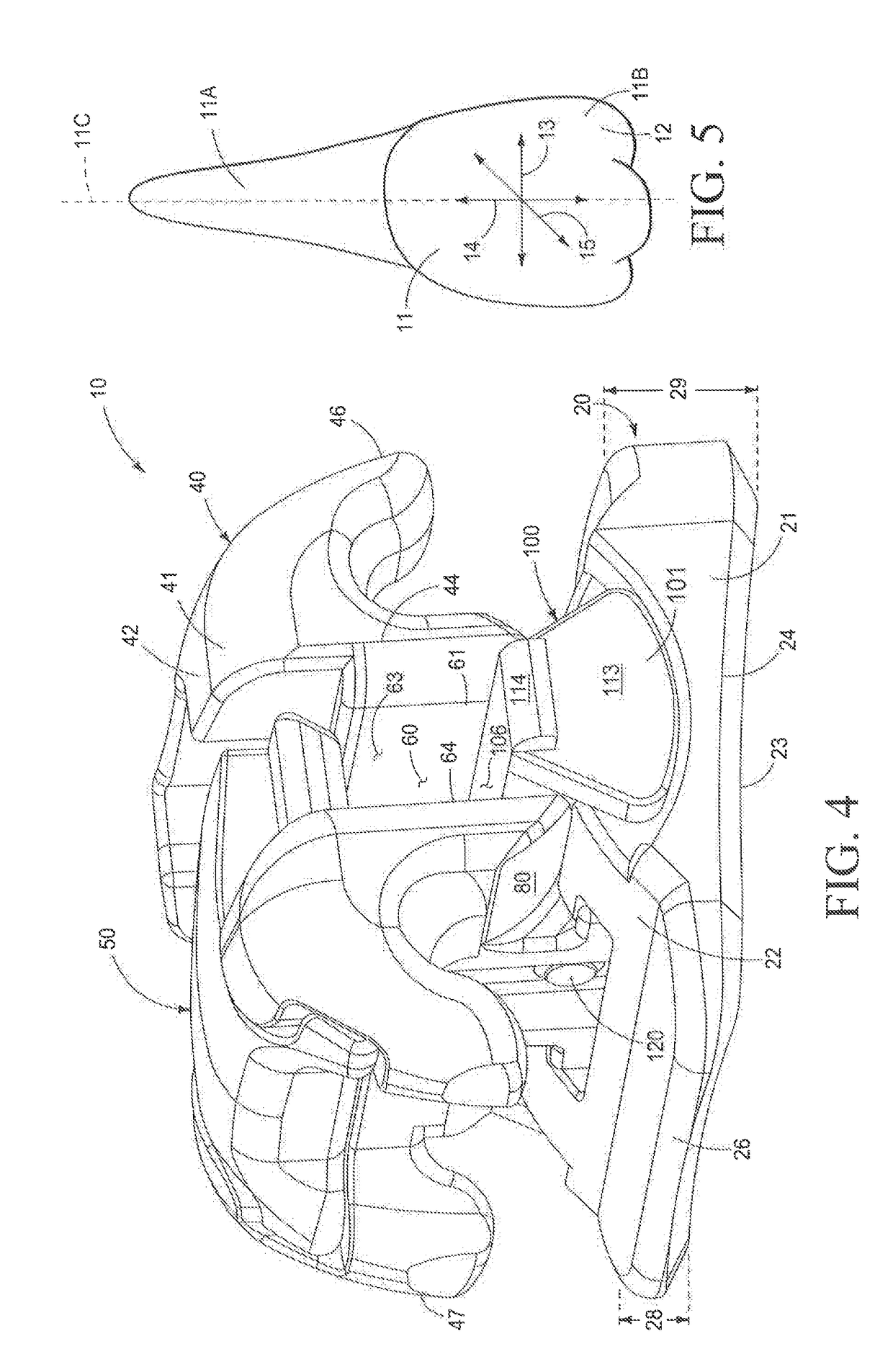Orthodontic Bracket Apparatus and Method for Treating a Malocclusion
- Summary
- Abstract
- Description
- Claims
- Application Information
AI Technical Summary
Benefits of technology
Problems solved by technology
Method used
Image
Examples
Embodiment Construction
[0069]This disclosure of the invention is submitted in furtherance of the constitutional purposes of the U.S. Patent laws to “promote the progress of science and useful arts” (Article I, Section 8).
[0070]The first form of the present invention is generally indicated by the numeral 10 in FIG. 4 and following. For purposes of the present invention, it will be understood that the various forms of the invention, as described, hereinafter, will be used to implement a multiple-step orthodontic treatment method, regimen or plan, which is provided by a clinician to treat one or several orthodontic anomalies which a patient possesses. The orthodontic bracket 10 of the present invention is releasably affixed by means of a suitable adhesive or other means to a patient's tooth 11 (FIG. 5) and in particular to the anterior facing surface 12 thereof. The orthodontic bracket 10, in its various forms, will be discussed, hereinafter, and when used in combination with an arch wire 90, and other ortho...
PUM
 Login to View More
Login to View More Abstract
Description
Claims
Application Information
 Login to View More
Login to View More - R&D
- Intellectual Property
- Life Sciences
- Materials
- Tech Scout
- Unparalleled Data Quality
- Higher Quality Content
- 60% Fewer Hallucinations
Browse by: Latest US Patents, China's latest patents, Technical Efficacy Thesaurus, Application Domain, Technology Topic, Popular Technical Reports.
© 2025 PatSnap. All rights reserved.Legal|Privacy policy|Modern Slavery Act Transparency Statement|Sitemap|About US| Contact US: help@patsnap.com



